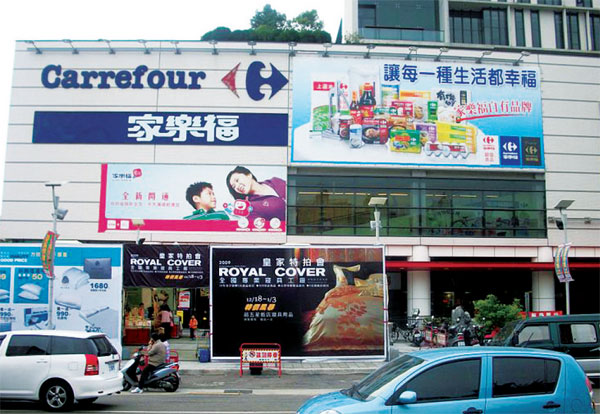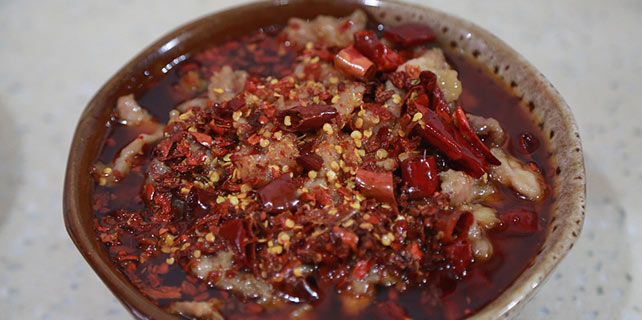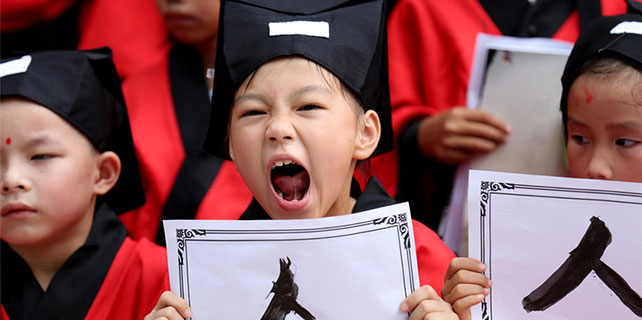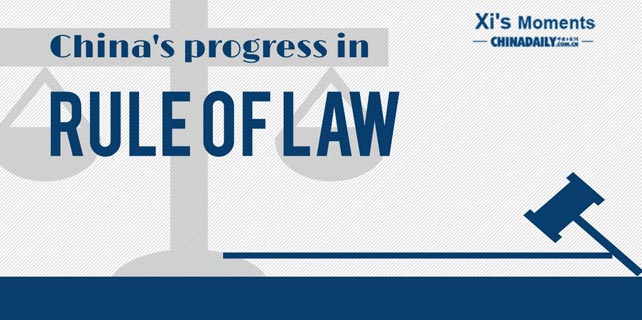Making the best out of a fallen giant
 |
|
Carrefour, a French multinational retailer with more than 230 hypermarkets in China, also faces challenges from the tough economic conditions, as well as consumers' changing habits. PROVIDED TO CHINA DAILY |
On Yuanling Street, in Shenzhen's downtown Luohu District — the hustle and bustle of the city's business and social life — a new operator is calling the shots trying to revive the past glory of one of Shenzhen's biggest supermarket chains.
It has laid out a dog-and-pony show offering staggering discounts of up to 50 percent, but the response, seemingly, has been way out of expectations.
The crowds of yesteryear aren't there, hardly matching the number of its staff in attendance. One of the supermarket's two escalators is out of action and most of the stores that used to sell cigarettes, clothes and shoes on the same floor are gone, with only empty shelves in view.
Nevertheless, the picture still looks promising from a year ago, when the supermarket was forced to put up the shutters after an 18-year run. It had been operating under the umbrella of A Best — one of Shenzhen's largest supermarkets chains in its heyday before it went to the wall.
Earlier this year, a new owner — UGO Mart — took over, bought 18 of the A Best group of supermarkets and reopened them.
The new operator has tried hard to put on a new face for the group and cash in on the e-commerce craze by upgrading the business and creating an e-shop. But, after more than half a year, online sales have been as dismal as those of its offline stores.
On the other hand, it has not altered much the size of the stores or its facilities. Even A Best's green theme color has been left intact.
Supermarkets across the Chinese mainland have gone through a rough patch in recent years, many having either called it a day or downsized when the chips are down, as the national and world economies slowed and evolving consumer habits take their toll. Even the likes of France-based multinational retailer Carrefour, which has more than 230 hypermarkets in China, US giant Wal-Mart Stores and homegrown, Shenzhen-listed Ren Ren Le have not been spared.
Some retailers have pointed the finger at e-commerce as both the culprit and savior in a business that's so vulnerable in times of political and economic uncertainties. UGO Mart's bid to revive the fortunes of a sagged enterprise and ride out the retail revolution by relying on online expansion alone looks a Sisyphean task.
"The primary cause of A Best's demise was that it had missed out on the best opportunity to transform its business model due to chaotic internal management," lamented Liu Luyu, deputy director and chief consultant of the Shenzhen Retail Business Association.
Liu was also a witness to the founding of A Best in 1995 by entrepreneur Li Binlan who, along with other key executives, has kept herself out of sight, and the group's head office in Shenzhen has been empty for months.
"A Best's business strategy had been aggressive expansion, like all other supermarkets in China in the beginning. It gradually deviated from retail to real estate, largely relying on rental income," he said.
Since its launch in 1995, A Best had opened 116 hypermarkets, each covering tens of thousands of square meters, across the country in less than two decades. Besides its own stores, the chain had leased space to merchandisers of shoes, clothing and other general commodities. The retailers themselves had racked up substantial losses.
For instance, Belle International Holding Ltd — a former leading maker of women's shoes on the mainland and whose stores are usually located in or near supermarkets — eventually voted to delist itself from the Hong Kong Stock Exchange after an excruciating 13 consecutive quarters of negative sales growth.
A declining market finally broke A Best's capital chain, pushing it to shut down its stores one after another in August last year.
Its branch in Hunan province sank into bankruptcy in June, with debts of 1.1 billion yuan ($0.17 billion) — equivalent to 84 percent of the group's total assets.
"Another weakness of its business model was the way it handled suppliers," recalled Liu. "They required suppliers introduced to them to fork out all sorts of 'backstage fees' in order to get in."
He said it had been a highly controversial issue for a long time, but the issue has now become very intense as suppliers' profits have shrunk substantially.
Li Zhengliang, sales director of frozen food supplier Shenzhen Rongjian Commercial and Trading Co, told China Daily their sales volume had plummeted at least 30 percent in the past two years. He admitted that "backstage fees" are the rule of the game, and he has to accept them if he wants to be in the supermarket business. He claimed that A Best took an additional cut of several percentages of his company's revenue every month, season and year, in addition to the normal charges.
This forced Li's company to withdraw from supermarkets earlier this year and begin supplying community stores with high-end products.
"Their charge is 40 percent less and the payment period is much shorter than that of supermarkets, allowing us to lower our prices and reap higher profit margins," he added.
Bing Xue, a director of the China Chain Store and Franchise Association, said many supermarkets have adopted big data analysis to make procurement decisions and improve the rules of working with suppliers to get lower prices.
"Besides raising efficiency, adapting to consumption upgrading is another key to surviving the ongoing retail revolution," she stressed.
Bing said young people born in the 1990s and 1980s have emerged as the main force of family consumption, and they're more sensitive to value instead of pricing.
Most reviews on Dianping.com — a leading consumer review website on the mainland — agreed that the problems that hastened A Best's exit from the scene included overuse of enormous supermarket space, inferior products, low prices and a poor shopping environment.
UGO Mart, it appears, has a gargantuan task on its shoulders as it attempts to strike a stunning turnaround for the group it has sought to revive. For the time being, it prefers to keep its future plans under wraps, playing its cards close to its chest.
















